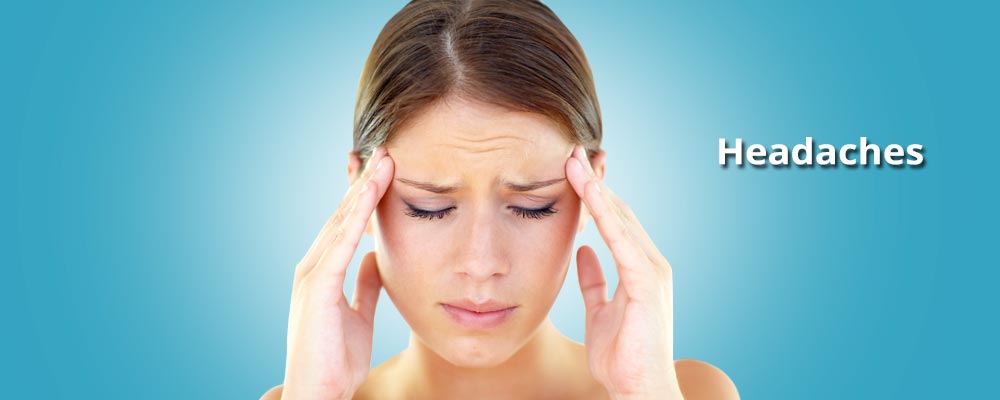Physiotherapy for Headaches
Headaches: click here for headache type classification
The most common headaches we see in physiotherapy are cervicogenic and tension headaches.
A cervicogenic headache is another name for a headache which originates from the upper part of the neck and back of head. The neck consists of several vertebrae. During certain neck movements (including strain from quick movements which may occur in sport or during a whiplash injury) or prolonged postures (driving or sitting for long periods in front of the computer), stretching or compression forces can be placed on the joints, muscles, ligaments and nerves around the neck. This may cause damage to these structures. When this occurs pain may be referred to the head causing a headache.
Symptoms of a cervicogenic headache are:
- A steady dull, non- throbbing pain at the base of the skull
- Pain can also refer to the brow and around the eyes
- Stiffness and difficulty when turning their neck, this will usually make their symptoms worse.
- Headache symptoms are usually on one side of the head
- Headaches will be aggravated by certain positions or sustained postures (driving, sitting at the computer)
- Patients will very commonly have a lot of tenderness and tightness at the back of the head at the base of the skull
A tension headache is commonly referred to as a stress headache. A tension headache may be described as a mild to moderate constant band-like pain, tightness, or pressure around the forehead or back of the head and neck. A tension headache may last from 30 minutes to a few days. Although the causes of tension headaches aren’t clear, a tension-type headache can be caused by emotional tension, which may include stress, anxiety or tiredness. Physical tension such as poor posture or squinting to read can also cause scalp or neck muscles to tense up, increasing the sensitivity on these areas. This can lead to a tension-type headache. Clenching in the jaw (temporomandibular joint) will cause tightness in the muscles of the jaw which may also contribute to headaches around the temples.
Symptoms of a tension headache are:
- Tight, throbbing band of pain around the back of the neck
- Tenderness and tightness around the scalp, temples, neck and shoulder muscles
Physiotherapy treatment is aimed finding the source of the headache, whether it is posture related, muscular or due to joint stiffness. Treatment usually includes mobilisations, dry needling or stretches to the associated stiff joints and tight muscles involved, as well as exercises and postural re-education to minimise further strain on the upper neck. Most patients will have a full recovery of their symptoms with the appropriate physiotherapy treatment.
If you have any queries, please don’t hesitate to call 011 064 5670 or enquire online.

